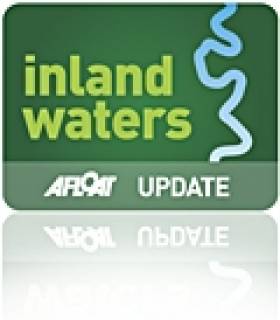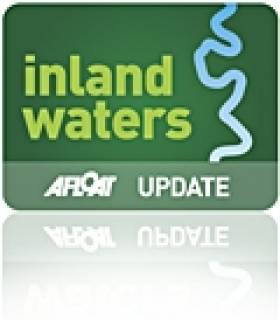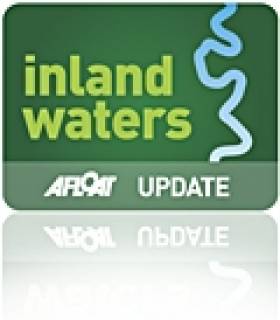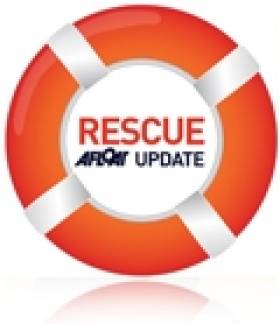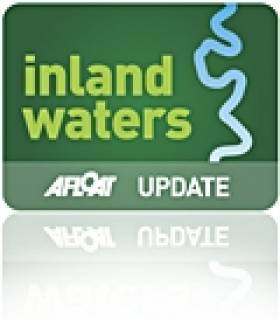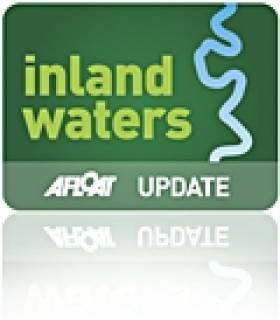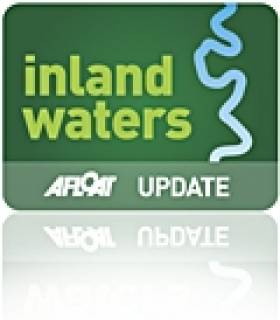Displaying items by tag: Waterways Ireland
#INLAND WATERWAYS - Waterways Ireland has applied for planning permission to build a new houseboat mooring facility on the Grand Canal at Sallins in Co Kildare.
The planned 210-metre fixed timer mooring is expected to cater for 12 boats with electric and water service supply bollards as well as a sewage pumpout.
There will also be 45 metres of short-term mooring space, a 12-space car park and disabled access to the facility.
Submissions on the planning application will be accepted by Kildare County Council till 11 September 2012. Details are available via the council's online planning system (application number 12645).
As previously reported on Afloat.ie, Waterways Ireland launched a scheme earlier this year for renting houseboat berths at the western end of the Grand Canal at Shannon Harbour.
#INLAND WATERWAYS - Northern Ireland will welcome avid fans of watersports from across the UK and Ireland next month when the Waterways Ireland Riverfest returns for 2012.
Christie Park between the bridges in Coleraine will play host to the Riverfest for a sixth consecutive year on Saturday 11 and Sunday 12 of August.
Over the years this family-orientated event has attracted tens of thousands of visitors to Ireland's inland waterways, and this year a full programme of water- and land-based activities is sure to entertain and engage, including waterskiing, jetskiing, wakeboarding and barefooting by a team of world-class athletes.
Following on from the success of previous years' events, Riverfest will highlight the cream of Irish talent with shows from the Xtreme Action Team headed by Ant Burgess, wowing the crowds with inverts of up to 20ft.
The Waterways Ireland Wakeboard Open Championship will bring together the 30 best wakeboarders from all over Ireland to compete in a two-round competition over the weekend. (Wakeboarders click HERE for details on how to take part.)
Also in the line up is Caite Skelly, a 14-year-old from Coleraine who will be barefoot waterskiing at over 40mph.
Event organiser Rob Skelly said: “The Waterways Ireland Riverfest has been a phenomenal success since we launched five years ago. For 2012, the line-up will be bigger and better cementing its reputation as one of the best water-sports events across the UK and Ireland."
#INLAND WATERWAYS - The Lakelands & Inland Waterways Ireland Sailing Raid is a unique event combining sailing, adventure, exploration and racing in the setting of some of the most stunning countryside in Western Europe.
On 14-21 September a fleet of about 40 'open' boats – including the 5.5-metre Shannon One Design, the 4.5-metre Water Wags and various traditional styles and new builds all under 7.5 metres long – will sail 190km from Lough Erne in Northern Ireland, through the River Shannon and across the great lakes of Lough Ree and Lough Derg to Killaloe.
Although it will be a competitive race, there will be some time left to enjoy the scenery and the Irish hospitality of the three participating yacht clubs along the way. Some will come for the racing, some for the scenery, some for the spirit of comraderie – but everyone is sure to enjoy the craic.
To maintain the maritime nature of the event, the Lakelands & Inland Waterways Ireland Sailing Raid will be based as much as possible on the water.
Accommodation will be provided in motor cruisers for those who want it, while some will be able to camp near the river bank and others will make their own arrangements. Each stopover will therefore bring together participants in a 'floating village', with several receptions and festivities in the evenings.
The event is being organised in close collaboration with Waterways Ireland, with logistical support will be provided by the three main yacht clubs on the route: Lough Erne Yacht Club, Lough Ree Yacht Club and Lough Derg Yacht Club.
Members of the local clubs are being invited to take part at a preferential rate, while raid competitors from all over Europe will provide an international element to the event.
For more information and application details, visit the Sailing Raid website at www.sailing-raids.com.
#inland – Boat owners need to be careful about not overstaying at any one mooring after Waterways Ireland successfully undertook the prosecution of two boats owners on Lough Erne for breaching the 48 hour mooring Bye-law. The defendants received a caution and undertook to comply with the Bye-laws in the future.
Waterways Ireland communicates regularly with boat owners about the Bye-laws and has produced a publication "Good Boating Guide" advising boat owners of the Bye-laws on Lough Erne.
Having recorded breaches of the 48 hour mooring Bye-laws, Waterways Ireland wrote to the boat owners advising of the breach and after subsequent breaches were noted, Waterways Ireland reluctantly brought the prosecutions under the Bye-laws.
The Magistrate, Mr. Kennedy, commented that "the Prosecutions were properly brought and it is important that people comply with the Bye-laws. "
Brian D'Arcy, Waterways Ireland's Director of Operations stated "Waterways Ireland had no option but to prosecute following the increasing numbers of local boat owners abusing moorings provided for visiting tourist boats. Waterways Ireland provides moorings free of charge to enable tourists and touring boat owners to access attractions, services, towns and villages. Particularly in Enniskillen, the moorings facilitate the tourism economy as boaters spend in shops and restaurants; reduced access means less income for the town. Waterways Ireland would like to ensure all boat owners are made aware of their responsibilities when using public moorings and do not leave their boats moored in one location on a public mooring for more than 48 hours."
For more information boaters can download a copy of the Good Boaters Guide from the Waterways Ireland website or order a copy free from the Webshop www.waterwaysireland.org.
Second Cruiser in a Week Runs Aground in Lough Erne
#RESCUE - Four people were rescued on Lough Erne yesterday after their motor cruiser ran aground in the second such incident in a week, the Belfast Telegraph reports.
All on board were retrieved by RNLI lifeboat from the 29ft cruiser, which is believed to have stranded on rocks beyond the marked channel of the lough.
No injuries or damage to the vessel were reported, with a Northern Ireland Coastguard spokesperson describing it as "a routine rescue".
The coastguard blamed low water levels in the lough caused by lack of rainfall in Co Fermanagh.
Waterways Ireland has posted a marine notice warning boat users of the risks posed by "the extended period of unseasonal dry weather" for Ireland's inland waterways.
In a similar incident last Friday, three adults and two children were rescued from a cruiser that stranded in shallow water on the lough.
The Belfast Telegraph has more on the story HERE.
River Barrow Has Potential for Tourism
#INLAND WATERWAYS - A new study on the River Barrow and its environs recommends the development of "activity hubs, tourist trails and new angling and boat facilities", The Irish Times reports.
Waterways Ireland and Fáilte Ireland commissioned the Barrow Corridor Recreational, Tourism and Commercial Identification Survey to find ways to exploit the area's "undeveloped potential" for tourism.
The survey covered the river itself as well as its estuary and the Barrow branch of the Grand Canal. Its findings pointed to a number of areas where development is already being actioned, such as in boating and cruising, nature and wildlife, and angling.
Environment Minister Phil Hogan, who launched the study in Carlow yesterday, hailed the co-operation of the agencies and county councils involved.
The Irish Times has more on the story HERE.
Carrick-on-Shannon Rowing Club "Head of River" Race
#SHANNON NAVIGATION – Carrick-on-Shannon Rowing Club "Head of River" race will take place on Sat 18th Feb 2012 from 09.00 hrs until 17.00hrs. Waterways Ireland has advised Masters of vessels to proceed at slow speed and with minimum wash when passing this stretch of the navigation and to heed any advice or instructions issued by the regatta officials.
Waterways Ireland Public Consultation on Safeguarding Vulnerable Groups
#INLAND WATERWAYS - Waterways Ireland is currently undertaking two new public consultations on improving safety standards for children, the elderly and people with disabilities on our inland waterways.
Details for the consultation exercise on Safeguarding Vulnerable Groups Policy & Procedures and the Draft Disability Action Plan 2011-2013 are available from the Waterways Ireland website.
Comments may be submitted via e-mail to [email protected] or by post to Waterways Ireland, Strategy & Policy Section, 2 Sligo Road, Enniskillen, Co Fermanagh BT74 7JY.
The closing date for comments is Tuesday 21 February 2012.
New Tug for Shannon-Erne Waterway
#INLAND WATERWAYS - Waterways Ireland has taken delivery of its third tug boat from Mooney Boats of Killybegs.
Designed by Marine Design International, the Inish Fendra is an 11.2-metre LOA steel-built tug which has been specifically tailored for operation on the Shannon-Erne waterway system.
Its design bears many similarities to the Inis Muillin, which was delivered by Mooney Boats in 2010.
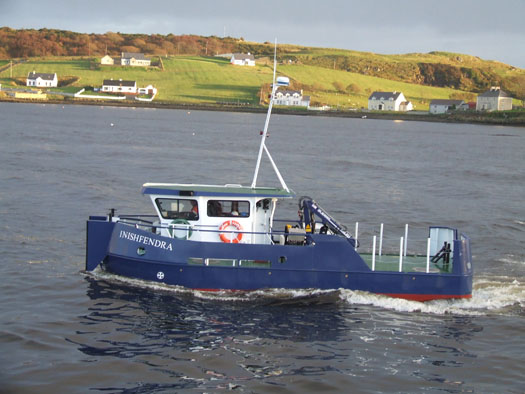
The new tug, Inisfendra built by Mooney Boats of Donegal
According to Maritime Journal, the design process "involved significant input from the vessel operators and managers combined with the latest technology and ideas from the designers and builders to improve on efficiency" and safety.
A key feature of the Inish Fendra is its 3,500-litre ballast tank and pumping system, which is operated by the push of a button and can reduce the vessel's air draft by 0.2m.
Maritime Journal has much more on the Inish Fendra HERE.
Bidding Begins for Shannon Harbour Houseboat Berths
#SHANNON - Waterways Ireland has just released details of its scheme for renting berths for houseboats on the Grand Canal at Shannon Harbour.
Under the scheme, boaters can rent one of eight fully-serviced berths for their houseboat on a 12-month extended term licence running from 15 March 2012 to 14 March 2013.
Amenities on-site include electricity supply, access to pumps and clean water, shower facilities and limited car parking. Pre-paid smart cards are required to utilise some facilities.
As space is limited, the berths will go to the highest bidders, with the minimum acceptable bid set at €1,250 (a security deposit of €250 is required).
It is expected that licence holders will live on board their vessels as their main residence. Winning bidders are also expected to arrange their own refuse collection from the site.
The closing date for bids is 23 February 2012. The Waterways Ireland website has the application form plus more information about the scheme and details of the licence agreement.



























